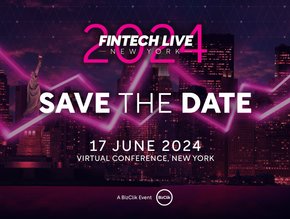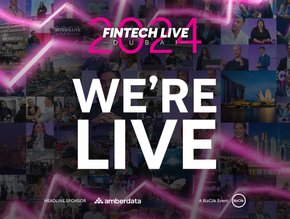Global Payments: Embedded Finance Reshapes Consumer Journeys

Embedded Finance has been helping the financial services landscape evolve for some time, eliminating the need for traditional intermediaries. It involves products and services ranging from deposits, issuing and lending and payments - but is now starting to become more powerful via integration.
Consumers can now interact daily with digital interfaces and move more money from within non-bank apps or software, as Global Payments’ Alan Irwin explains.
In an exclusive interview with FinTech Magazine, Irwin discusses some of the benefits of embedded finance and how it can improve a customer’s digital experience.
Expanding the definition of embedded payments
Irwin explains how more businesses than ever before are taking ownership of the payment process because it has a transformative impact on the customer experience. This could range from ride-sharing apps offering instant payments, to merchants offering buy-now-pay-later (BNPL) options.
FinTech Magazine has previously researched how embedded finance is a big driver of financial inclusion in this way, supporting a differentiating customer experience.
“Payments are by far the largest element of embedded finance in terms of revenue and growth opportunities for merchants. According to research by EY, the volume of payments through embedded channels reached US$2.5tn in 2021 and is expected to reach US$6.5tn by 2025,” Irwin says.
He also cites the COVID-19 pandemic as a significant driver for growth, having pushed millions of consumers to rely on embedded payments.
“They can make a purchase without leaving a website, social media channel, or mobile app. For businesses too, multiple customer touchpoints are good candidates for embedded payments: customer loyalty apps, digital wallets, accounting software, and shopping cart platforms, among others,” he highlights.
“Integrating embedded payments across these channels simplifies the payment process and presents opportunities for advanced data analytics and revenue generation. As a result, embedded payments are exploding across commerce and in unexpected industries.”
Tapping into transformative potential
The rise of embedded payments is partly in response to a shift in consumer behaviour. Modern consumers, according to Irwin, are now very accustomed to digital platforms and expect a seamless and integrated approach to financial services.
“Embedded payments meet these expectations by offering financial services within the natural flow of consumers' daily activities,” Irwin explains. “Whether it's making purchases online, subscribing to services, or engaging in the gig economy, embedded payments eliminate the need for customers to switch between platforms, ensuring that financial transactions are no longer a separate, cumbersome step but an intrinsic part of an effortless user journey.”
Currently, financial businesses are focusing purely on customer experience as a means of increasing customer loyalty. As a result, they are cutting cart abandonment rates.
Irwin says: “69.57% of online shopping carts are abandoned. Embedded payments are one way for businesses to lower this rate.
“Taking out a credit card and manually entering the number is a friction point that can cause consumers to abandon a digital purchase. Embedded payments make this process easier by connecting and saving a payment method for later use at the click of a button.
“Merchants are now seeing greater use of card data storage and tokenisation to further reduce cart abandonment rates as they allow consumers to store their card details for future use, making their next purchase at the ecommerce store much faster.”
From security, to inclusion: Becoming digitally transformative
During a time of intensified financial cybercrime, embedded finance could offer a solution to allow consumers to feel more secure when making payments.
Often, customers get forwarded to a third-party website or app to process their payment. This can make the payment process more time-consuming and can lead to additional errors or security issues. As a result, if the customer feels their data is not secure, they could abandon the payment altogether.
“Reducing site changes as much as possible and using clear branding and user experience (UX) to ensure customers are aware that they’re still on the same site is key to instilling a sense of security,” Irwin states.
“Similarly, real-time data validation built into the payment form can prevent bad data from being entered in the first place, such as an invalid expiry date or security code, as well as restrict bad actors from spamming through card data en masse.”
Irwin comments on how a side-effect of the pandemic was that it forced businesses, consumers and financial institutions to picture a cashless society.
“Unable to touch PIN pads, let alone handle cash, many merchants permanently stopped accepting notes and coins,” he says. “This trend continued after the pandemic ended, leaving the unbanked without the same access to the things they need, or want, to buy. The dwindling of cash acceptance has provided financial institutions and businesses with an opportunity to present themselves as a problem-solver to the unbanked.”
Embedded payment solutions could offer a cash alternative option for customers and merchants to purchase goods and services, either via peer-to-peer payment services or BNPL. This is something that banks are also starting to consider, now offering advice and services like paying bills online, transfers and loan applications.
Irwin adds: “Embedded finance providers can also analyse alternative data sources, including cross-border sources, open banking data, and non-traditional sources like utility bills, to build a comprehensive picture of an individual’s creditworthiness.
“The evolution of embedded finance technology has been fuelled by fundamental changes in consumer and merchant behaviour. Consumers want financial products and services that are built into the technologies that touch their daily activities. As a result, embedded finance has become the solution by offering both banks and non-financial services brands the ability to provide a frictionless and integrated customer experience.”
**************
Make sure you check out the latest edition of FinTech Magazine and also sign up to our global conference series – FinTech LIVE 2024.
**************
FinTech Magazine is a BizClik brand.
- Strategy Shift: Stripe De-Couples Payments From Tech StackDigital Payments
- Exploring Fintech Zilch Following AWS Partner ExpansionDigital Payments
- How Scottish Building Society Posted Record Savings BalanceFinancial Services (FinServ)
- Visa Joins AWS Network to Simplify Digital Payments GloballyFinancial Services (FinServ)






